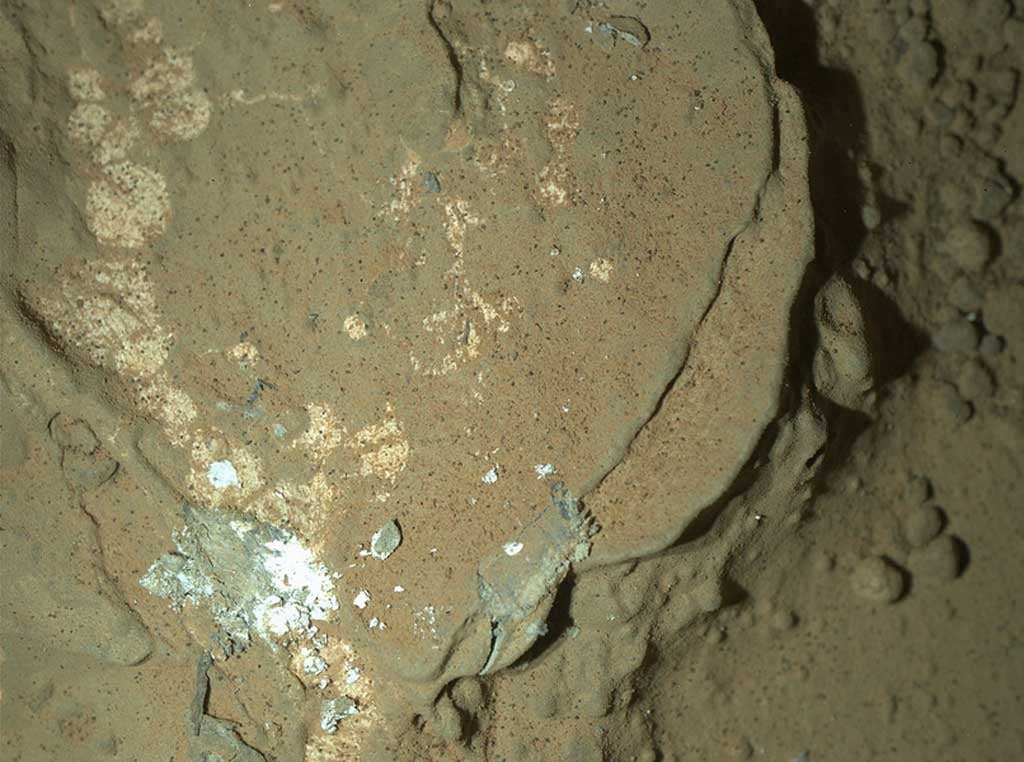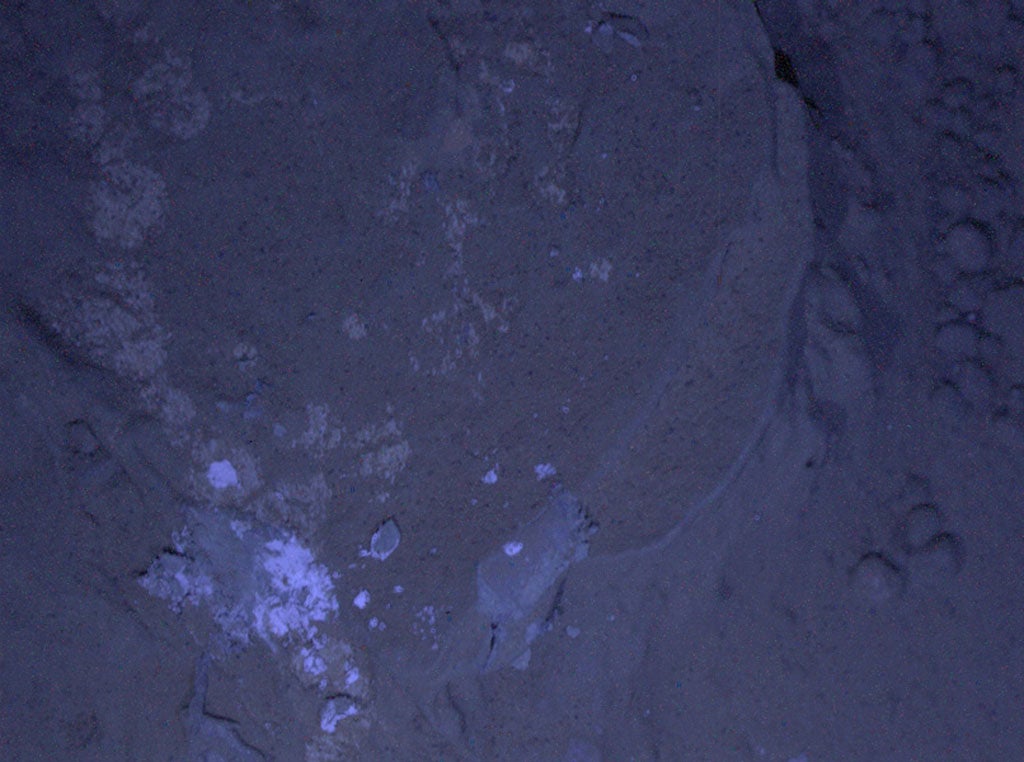Scientists used the rover’s Mars Hand Lens Imager (MAHLI) instrument for a close-up nighttime look at a rock target called “Sayunei,” in an area where Curiosity’s front-left wheel had scuffed the rock to provide fresh, dust-free materials to examine. The site is near where the rover team plans to begin using Curiosity to drill into a rock in coming weeks. The images of the rock Sayunei and of MAHLI’s calibration target were taken January 22 and received on Earth January 23.
“The purpose of acquiring observations under ultraviolet illumination was to look for fluorescent minerals,” said Ken Edgett of Malin Space Science Systems in San Diego, California. “These data just arrived this morning. The science team is still assessing the observations. If something looked green, yellow, orange, or red under the ultraviolet illumination, that’d be a more clear-cut indicator of fluorescence.”











